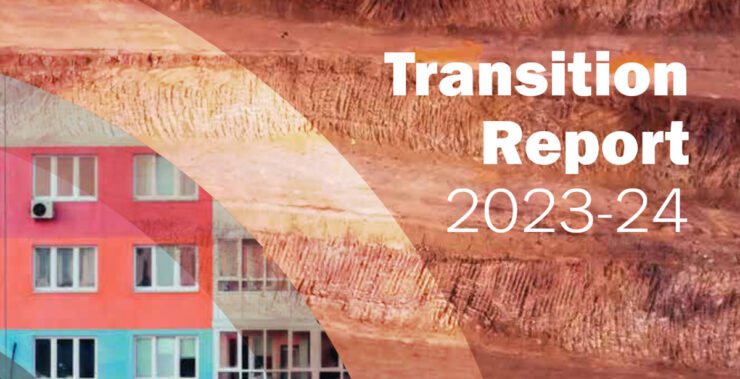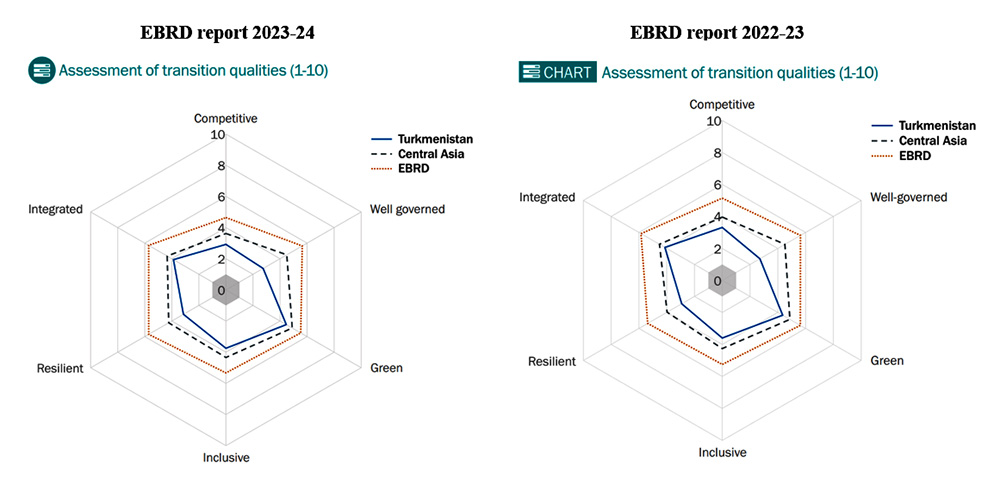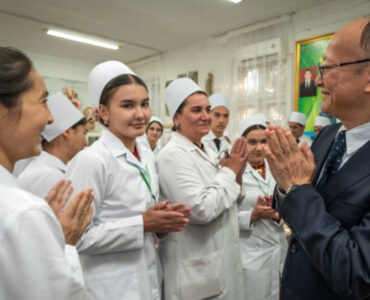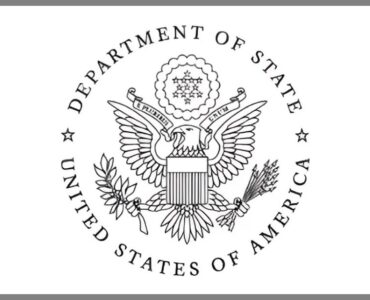The latest Transition Report (2023-24) from the European Bank for Reconstruction and Development (EBRD) on Turkmenistan, released in November 2023, reveals notable changes compared to the previous year’s report (2022-23).
Revision of GDP figures: The new report revised Turkmenistan’s GDP figures for 2019 and 2020, indicating declines of -3.4% and -2.9% respectively, contrary to the earlier report which cited growth rates of 6.3% and 5.9% for the same years. However, the report forecasts a 6.5% increase in GDP for 2023, driven by heightened gas exports, manufacturing output, and increased capital investment. Nevertheless, the country’s heavy reliance on gas exports to a single market (China), and issues such as water scarcity pose significant vulnerabilities.
Water shortages: Unlike the previous report, the new report underscores the issue of water scarcity as a critical concern for Turkmenistan’s future growth. Facing the highest risk of water stress in Central Asia, Turkmenistan is urged to adopt a comprehensive approach to food and water security, including promoting water-saving agricultural practices and technologies, as well as water reuse and recycling. Moreover, the EBRD recommends to the Turkmen authorities to initiate diplomatic efforts to establish water management agreements with neighboring countries, including Afghanistan.
Methane emissions: The new report highlights methane emissions in Turkmenistan. This was not mentioned in the previous reporting period. The country experiences a high rate of “super-emitter” events, with its fossil-fuel fields producing a combined 4.4 million tonnes of methane leaks in 2022, which is greater than the equivalent CO2 emissions of the United Kingdom in the same year. To address this, Turkmenistan has approved the 2023-24 Methane Roadmap and established an Intersectoral Commission for the Reduction of Methane Emissions.
Decline in inflation rate: The government does not publish inflation figures, however, the report notes a decline in the inflation rate, which peaked at 19.5% in 2021, fell to 11.2% in 2022, and is projected to reach 5.9% in 2023. This downward trend is in line with global trends in food and transportation prices. The dual exchange rate is still persistent with the official exchange rate being fixed at 3.5 manat/USD, while the black market rate stabilizing around 19 manat/USD since 2022. Both the current and last year’s reports highlight Turkmenistan’s adoption of an “unorthodox industrial policy”. This policy entails granting preferential access to foreign exchange at the official rate to select businesses, leading to concerns about unfair competition and favoritism within the market. Additionally, strengthening compliance standards in the banking system will be pivotal for entrepreneurs’ ability to conduct foreign-exchange transfers from abroad.
Donate to support Turkmen analysts, researchers and writers to produce factual, constructive and progressive content in their efforts to educate the public of Turkmenistan.
SUPPORT OUR WORKBorder management policy: reports from the both periods emphasize Turkmenistan’s geographical advantage and the need to address transportation bottlenecks in the region. The last year’s report provides a broader focus on infrastructure investment including pipelines, railways, roads, sea transport, and logistics infrastructure, while the current report highlights the importance of resolving soft connectivity issues, which includes harmonizing border management policies related to the movement of people and goods with neighboring countries.
The EBRD report aggregates scores across various transition qualities of countries’ economies under Integrated, Resilient, Inclusive, Green, Well-governed, and Competitive. As demonstrated by the charts below, there has been no progress in Turkmenistan’s transition scores in the last three years.
Source: EBRD Turkmenistan Reports







